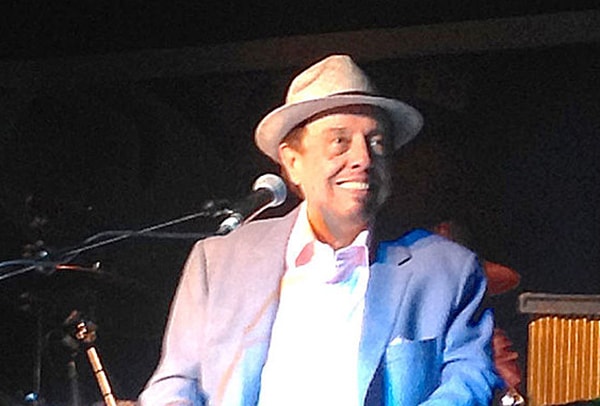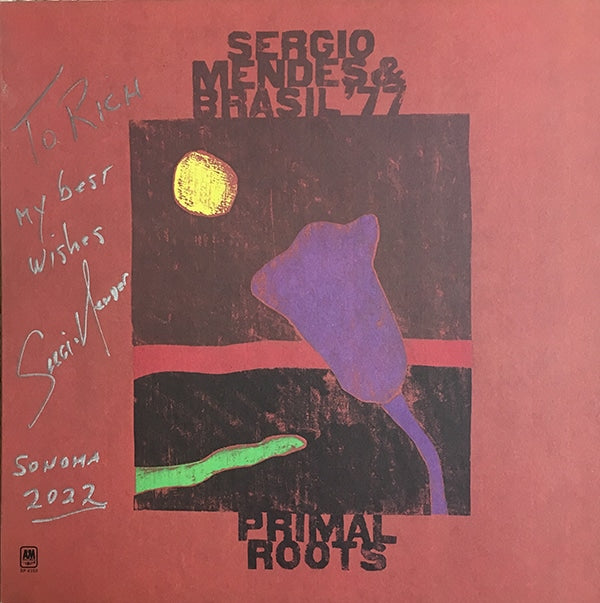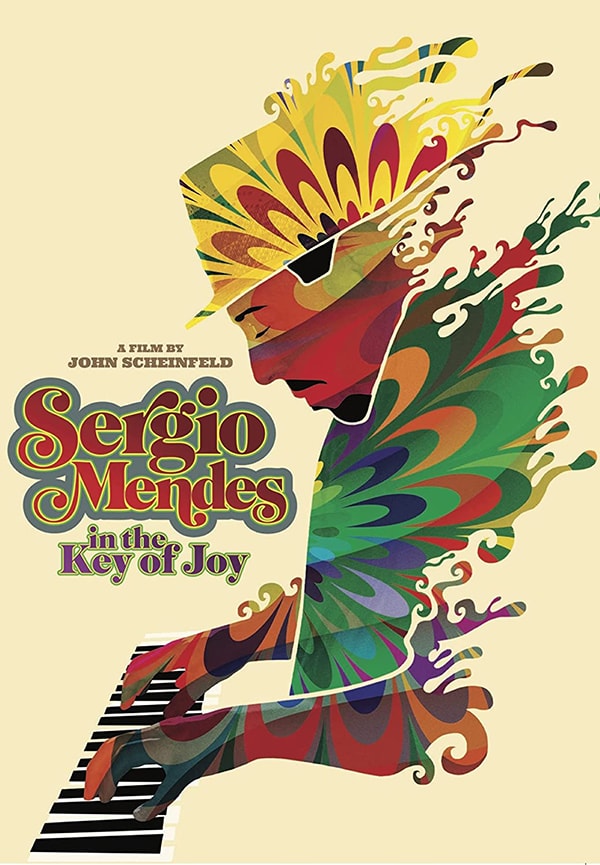It’s not often that internationally known artists make it to the relatively small town (population about 11,000) in which I live, but the folks who run our local 1930s-era movie theater are trying to change that. Not long ago, we were graced with a solo acoustic show by British guitarist Richard Thompson that was quite well attended.
In July, Brazilian jazz artist Sergio Mendes was here for a special screening of Sergio Mendes in the Key of Joy, a wonderful documentary about his life by filmmaker John Scheinfeld. Although there was no concert, both Mendes and Scheinfeld (along with Mendes’s wife and musical partner Gracinha Leporace) were in attendance and participated in a Q & A session afterward.
I have to admit that I own only one Sergio Mendes album, 1972’s Primal Roots. It is not your typical Brasil ’77 outing. It is both more ethnic and jazzy than his usual fare. From the liner notes: “Primal Roots is the result of an influx of new ideas and experiments, and it takes a special place among the recording experiences of Sergio Mendes and Brasil ’77. Most of it reconstructs, through Sergio’s arrangements, authentic folk and popular musical expressions of Brazil.”

Sergio Mendes. Courtesy of Wikimedia Commons/RCraig09, cropped to fit format.
The film encompasses his long and varied career in depth, and the title is especially appropriate. The 81-year-old Mendes comes across as a positive, joyful person who, as he says, is very fond of the word “serendipity.” Growing up in the town of Niterói, just across a bridge from Rio de Janeiro, he was stricken with the bone disease osteomyelitis at an early age. For a time, he couldn’t play physical sports with the other children, and only penicillin saved him from having a leg amputated. While he was restricted in his activities, he learned to play the piano that his mother had gotten for him.
Although he began by playing classical music, he became enamored of jazz, especially after hearing Dave Brubeck’s “Take Five” around the age of 12. Soon, he was listening to other jazz pianists such as Art Tatum and Horace Silver. While in his teens, Mendes started playing in clubs as a part of jazz trios and quartets. The bossa nova style was just catching on, and he was quite taken with the melodies and rhythms when he got to meet Antônio Carlos Jobim at a bar where Mendes was gigging. That meeting was one of many serendipitous moments in his life.
In 1962, he participated in a bossa nova concert at Carnegie Hall that featured Jobim, João Gilberto, Luiz Bonfá, and Stan Getz. He also got to record with Cannonball Adderley, one of his idols, after encountering him at the legendary Birdland jazz club.
A military coup and general unrest led him to leave Brazil for a home in the United States. Although he recorded several albums on the Atlantic and Capitol labels, his career didn’t take off until he hooked up with Herb Alpert, who was just starting up A&M Records. His first album for the new label, Herb Alpert Presents Sergio Mendes & Brasil ’66, sold quite well, buoyed by the hit “Mas Que Nada.” He had come up with a novel sound featuring two female vocalists, Lani Hall and Bibi Vogel.
His arrangements of popular hits such as “The Look of Love” and “The Fool on the Hill” cemented his stardom. After a few years, Lani Hall left the group to pursue a solo career (and marry Herb Alpert). After this loss, Sergio went back to Brazil for a time. There, he discovered a very young Gracinha Leporace singing in a club and realized she would be his next vocalist. He ended up marrying her, and they are happily married to this day (as are Alpert and Hall).
The documentary features interviews with Quincy Jones, John Legend, Will.i.am, and Harrison Ford. Ford’s commentary is particularly amusing. Before he was a Hollywood star, he made ends meet as a carpenter. His first job was building a recording studio for Mendes on his home property. The self-effacing Ford said, “Would I have hired me to do this? F*ck no!”
Mendes’s career would have ups and downs, with a major rebound coming in the 1980s via the hit song “Never Gonna Let You Go,” with vocals by Joe Pizzulo and Leeza Miller. In recent years, he has worked with a variety of younger, more contemporary artists, such as John Legend and Will.i.am (of the Black Eyed Peas). All spoke glowingly of the opportunity.
After the documentary was shown, Mendes and Scheinfeld talked about the making of the film. When that was over, Mendes took the time to speak and pose for pictures with members of the audience. I had brought along my LP, and he was very gracious in autographing it. He told me that it was the first project that he had recorded in his (at the time) new studio.

One of these days I’ll remember that metallic silver Sharpies don’t like to start writing right away – see the “To Rich” words.
The documentary is available for purchase on DVD and can be streamed from multiple sources. Highly recommended.


